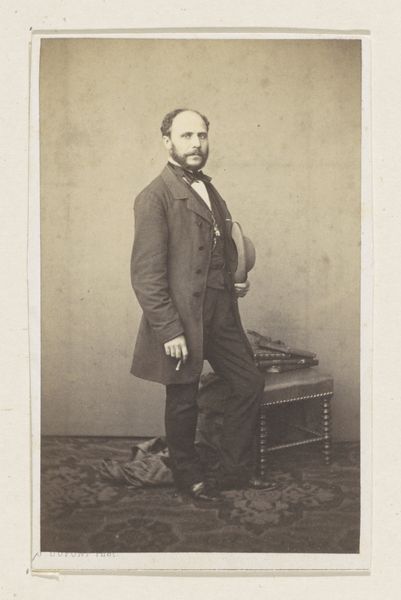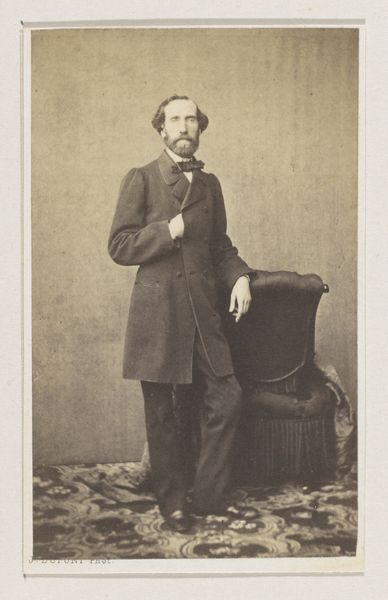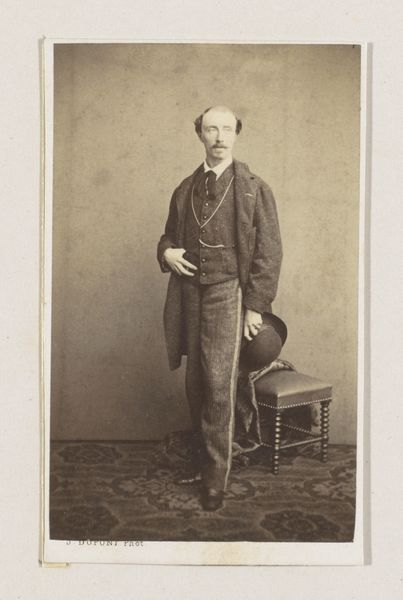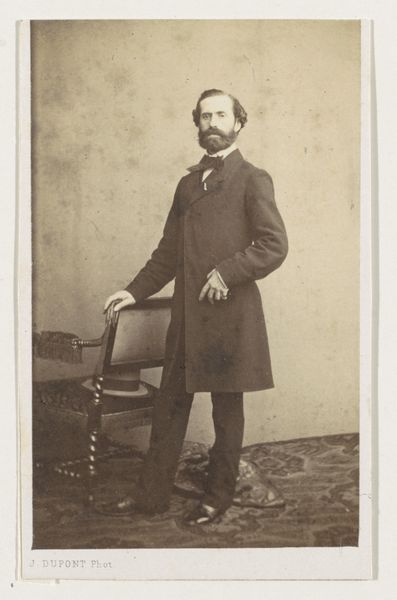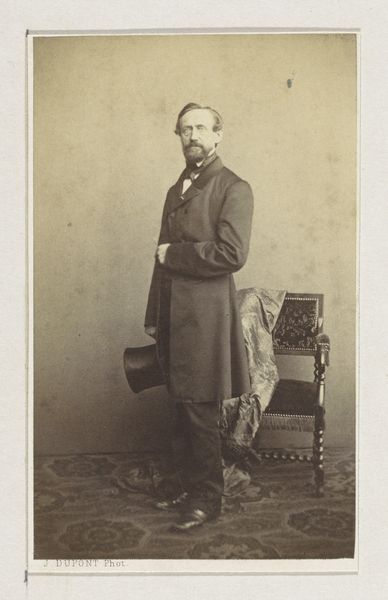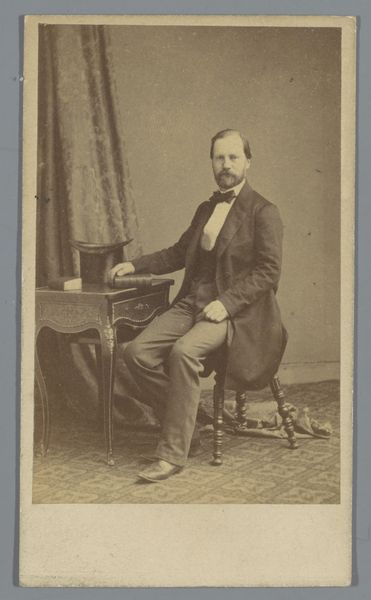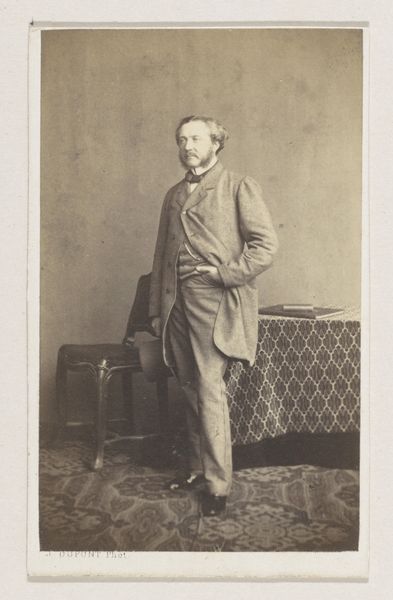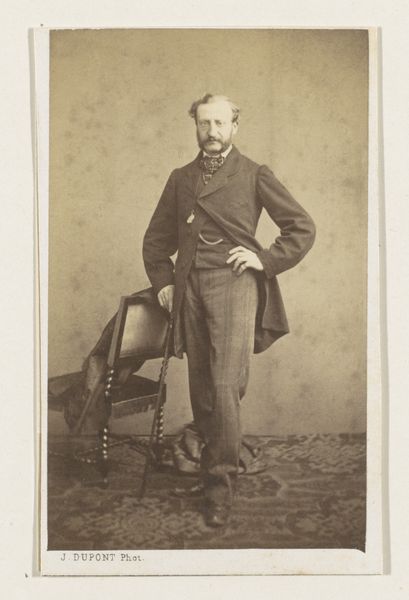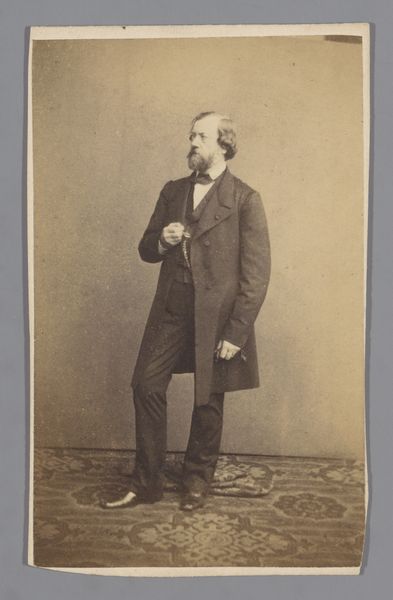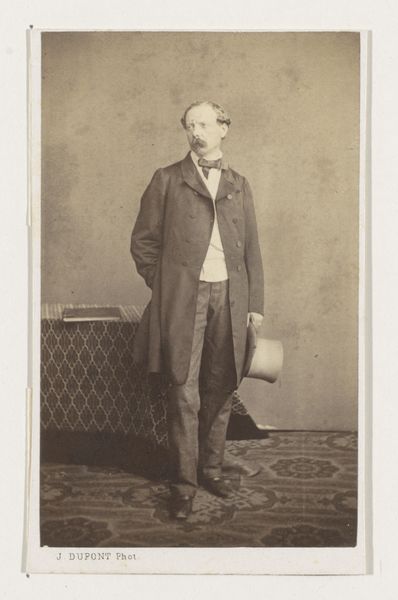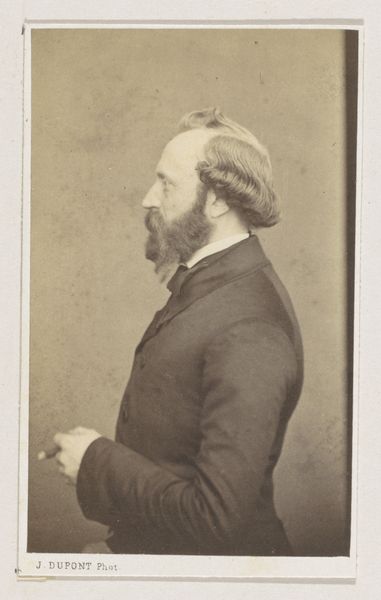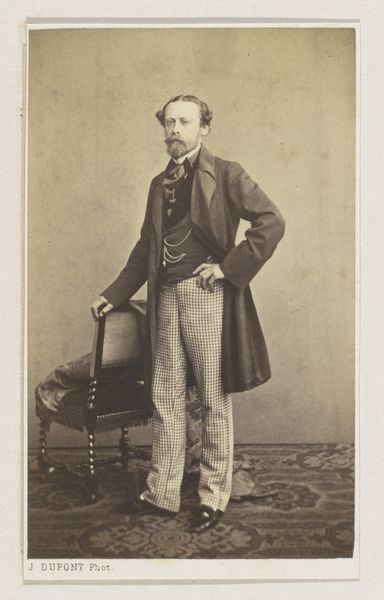
daguerreotype, photography
#
portrait
#
daguerreotype
#
photography
#
realism
Dimensions: height 101 mm, width 64 mm
Copyright: Rijks Museum: Open Domain
Curator: This is "Portret van de schilder Édouard Dujardin, ten voeten uit," a full-length portrait of the painter Édouard Dujardin. Joseph Dupont created it around 1861 using the daguerreotype technique. Editor: My initial response is one of somber dignity. The tones are muted, but the gentleman projects a quiet strength through the photograph’s composition. Curator: I agree. Dupont's command of the medium here highlights the nascent realist aesthetic. He renders Dujardin with great fidelity to detail; observe the meticulous rendering of fabric and texture. Editor: Dupont’s choice of the daguerreotype process would certainly have been influenced by the demands of realist aesthetics, focusing on verifiable, photographic accuracy. Curator: Exactly! Daguerreotypes offered a certain kind of visual truth valued then. Dujardin himself presents a controlled image—the hand almost casually tucked in, the ever-so-slight contrapposto. Editor: Note, too, the power dynamics implied in portraiture of this period. The subject’s gaze engages us but at a remove, as we become a passive audience for this controlled representation of status. Curator: His social milieu surely dictated a certain comportment. I’m curious about the cultural associations embedded within the chosen costume of suit and tie: What declarations of modernity or adherence to norms were these articles of clothing intended to convey? Editor: Such objects become stand-ins for ideals of class and civility. I wonder what Dupont and Dujardin hoped to communicate about the subject, or even about the rising professional status of art through photographic portraiture. Curator: These daguerreotypes often acted as calling cards of sorts—ways for artists like Dujardin to inscribe themselves within cultural memory, literally fixing themselves in time. Editor: This snapshot certainly gives us an excellent entry point to contextualizing the historical forces—social identity, photographic realism, the cultural aspirations of artistic individuals—shaping mid-19th-century Parisian portraiture.
Comments
No comments
Be the first to comment and join the conversation on the ultimate creative platform.
